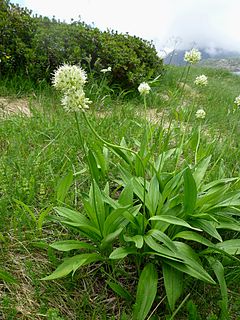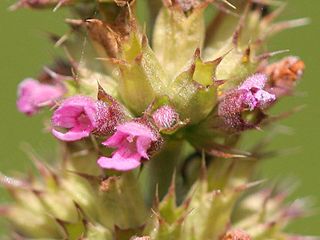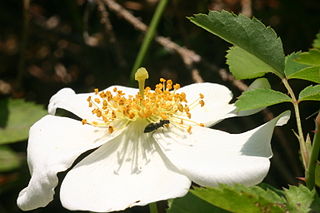
Tsar SimeonI the Great ruled over Bulgaria from 893 to 927, during the First Bulgarian Empire. Simeon's successful campaigns against the Byzantines, Magyars and Serbs led Bulgaria to its greatest territorial expansion ever, making it the most powerful state in contemporary Eastern and Southeast Europe. His reign was also a period of unmatched cultural prosperity and enlightenment later deemed the Golden Age of Bulgarian culture.

Zelkova is a genus of six species of deciduous trees in the elm family Ulmaceae, native to southern Europe, and southwest and eastern Asia. They vary in size from shrubs to large trees up to 35 m (115 ft) tall. The bark is smooth, dark brown. Unlike the elms, the branchlets are never corky or winged. The leaves are alternate, with serrated margins, and a symmetrical base to the leaf blade. The leaves are in two distinct rows; they have pinnate venation and each vein extends to the leaf margin, where it terminates in a tooth. There are two stipules at each node, though these are caducous, leaving a pair of scars at the leaf base. Zelkova is polygamous. Staminate flowers are clustered in the lower leaf axils of young branchlets; the perianth is campanulate, with four to six lobes, and the stamens are short. Pistillate and hermaphrodite flowers are solitary, or rarely in clusters of two to four, in the upper leaf axils of young branchlets. The fruit is a dry, nut-like drupe with a dorsal keel, produced singly in the leaf axils. The perianth and stigma are persistent.

Rosa canina, commonly known as the dog rose, is a variable climbing, wild rose species native to Europe, northwest Africa, and western Asia.

Ivan Alexander, also sometimes Anglicized as John Alexander, ruled as Emperor (Tsar) of Bulgaria from 1331 to 1371, during the Second Bulgarian Empire. The date of his birth is unknown. He died on 17 February 1371. The long reign of Ivan Alexander is considered a transitional period in Bulgarian medieval history. Ivan Alexander began his rule by dealing with internal problems and external threats from Bulgaria's neighbours, the Byzantine Empire and Serbia, as well as leading his empire into a period of economic recovery and cultural and religious renaissance.

Anthemis arvensis, also known as corn chamomile, mayweed, scentless chamomile, or field chamomile is a species of flowering plant in the genus Anthemis, in the aster family. It is used as an ornamental plant.

Rosa majalis is a species of deciduous shrubs in the genus Rosa, native to forests of Europe and Siberia. It grows to 2 m. and yields edible hip fruits rich in vitamin C, which are used in medicine and to produce rose hip syrup.

The flora of Italy was traditionally estimated to comprise about 5,500 vascular plant species. However, as of 2019, 7,672 species are recorded in the second edition of the flora of Italy and in its digital archives Digital flora of Italy. In particular, 7,031 are autochthonous and 641 are non native species widely naturalized since more than three decades. Additionally, further 468 exotic species have been recorded as adventitious or naturalized in more recent times. Geobotanically, the Italian flora is shared between the Circumboreal Region and Mediterranean Region. According to the index compiled by the Italian Ministry for the Environment in 2001, 274 vascular plant species were protected.

Eleocharis parvula is a species of spikesedge known by the common names dwarf spikerush, small spikerush and hairgrass in aquaria. It is a plant of brackish and saltwater habitat, such as marshes and mudflats. It is a perennial herb growing tufts of spongy, compressible stems not more than 10 centimeters tall. The plant grows from a tuber which is J-shaped or horseshoe-shaped, a characteristic that helps in the identification of the species. The inflorescence is an oval-shaped spikelet just 2 or 3 millimeters long, made up of several tiny flowers.

Potamogeton gramineus is a species of aquatic plant known by the common name various-leaved pondweed, variableleaf pondweed, grass-leaved pondweed or grassy pondweed, native to the northern hemisphere where it grows in shallow, clean water.
Serrulina serrulata is a species of air-breathing land snail, a terrestrial pulmonate gastropod mollusk in the family Clausiliidae, the door snails, all of which have a clausilium.

Allium victorialis, commonly known as victory onion, Alpine leek, and Alpine broad-leaf allium is a broad-leaved Eurasian species of wild onion. It is a perennial of the Amaryllis family that occurs widely in mountainous regions of Europe and parts of Asia.

Boris Alexeevich Fedtschenko was a Russian plant pathologist and botanist. He is primarily known for his work on various regions of Russia, especially the Caucasus, Siberia and Asiatic Russia. He was also head botanist at the Saint Petersburg Botanical Garden.

Chaiturus is a genus of plants in the family Lamiaceae, first described in 1787. It contains only one known species, Chaiturus marrubiastrum, native to central and southern Europe, Russia, Turkey, Caucasus, and Central Asia. False motherwort is a common name for this species.

Rosa arvensis, the field rose, is a species of wild rose native to Western, Central and Southern Europe.

Rosa pendulina,, the Alpine rose or mountain rose, is a species of wild rose found in the mountains of central and southern Europe. It appears to have survived in glacial refugia in the Alps and Carpathians, and spread out from there. A climbing shrub with deep pink flowers and relatively few thorns, it has had a history of cultivation as an ornamental plant.

Rosa tomentosa, otherwise known as the harsh downy-rose, is a species of wild rose. It is a shrub growing to about 3 metres (10 ft). It is found in Asia Minor, the Caucasus, and much of Europe: the British Isles, France, Central Europe, northern Spain, Italy, and the Balkans . On the British Isles it can be found in hedgerows and woodland margins, and it typically flowers between June and July. Further south, in Bulgaria, it flowers in May.

Rosa mollis is a species of wild rose. Common name soft downy rose. It is most closely related to Rosa villosa.

Salix euxina, the eastern crack-willow, is a species of flowering plant in the willow family Salicaceae, native from Turkey to the Caucasus. It was first described by I. V. Belyaeva in 2009. It is one of the parents of the common crack-willow, Salix × fragilis.

Geum reptans, the creeping avens, is a species of flowering plant in the genus Geum of the family Rosaceae native to some mountains of Central and Southeastern Europe. A long-lived perennial that reproduces both sexually and clonally, it has high phenotypic variation, but these variable traits do not appear to be adaptations to local conditions.

















